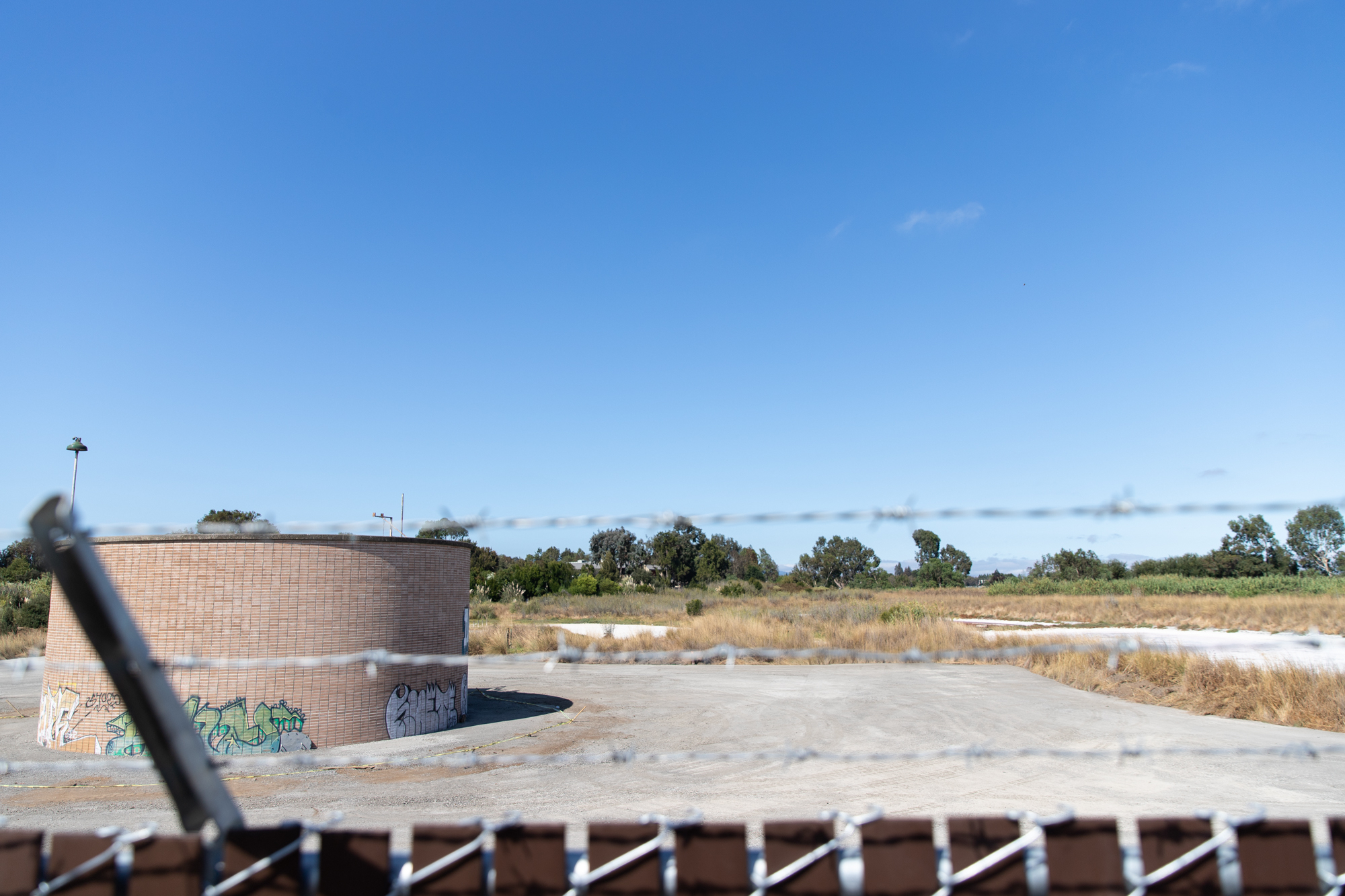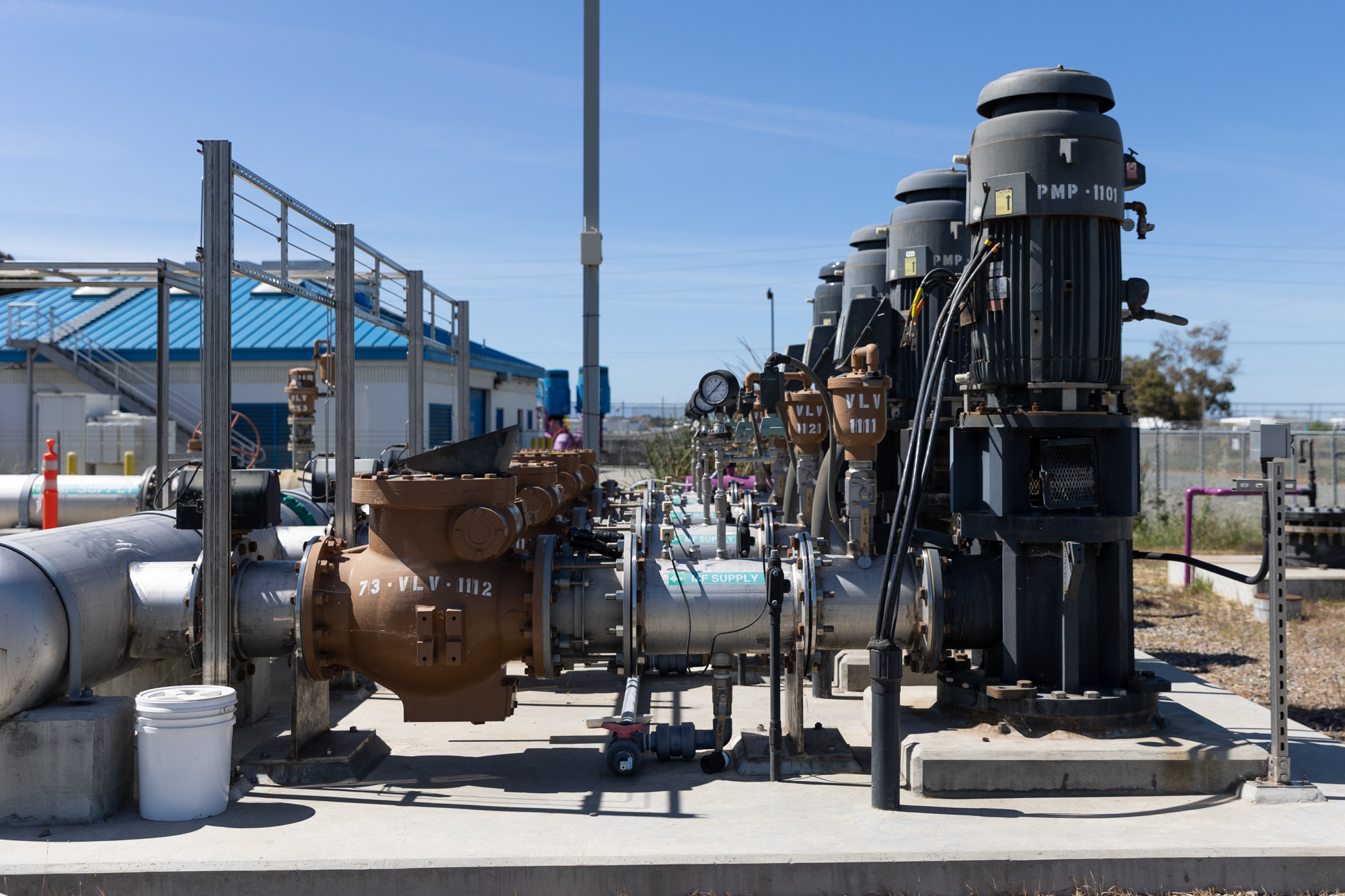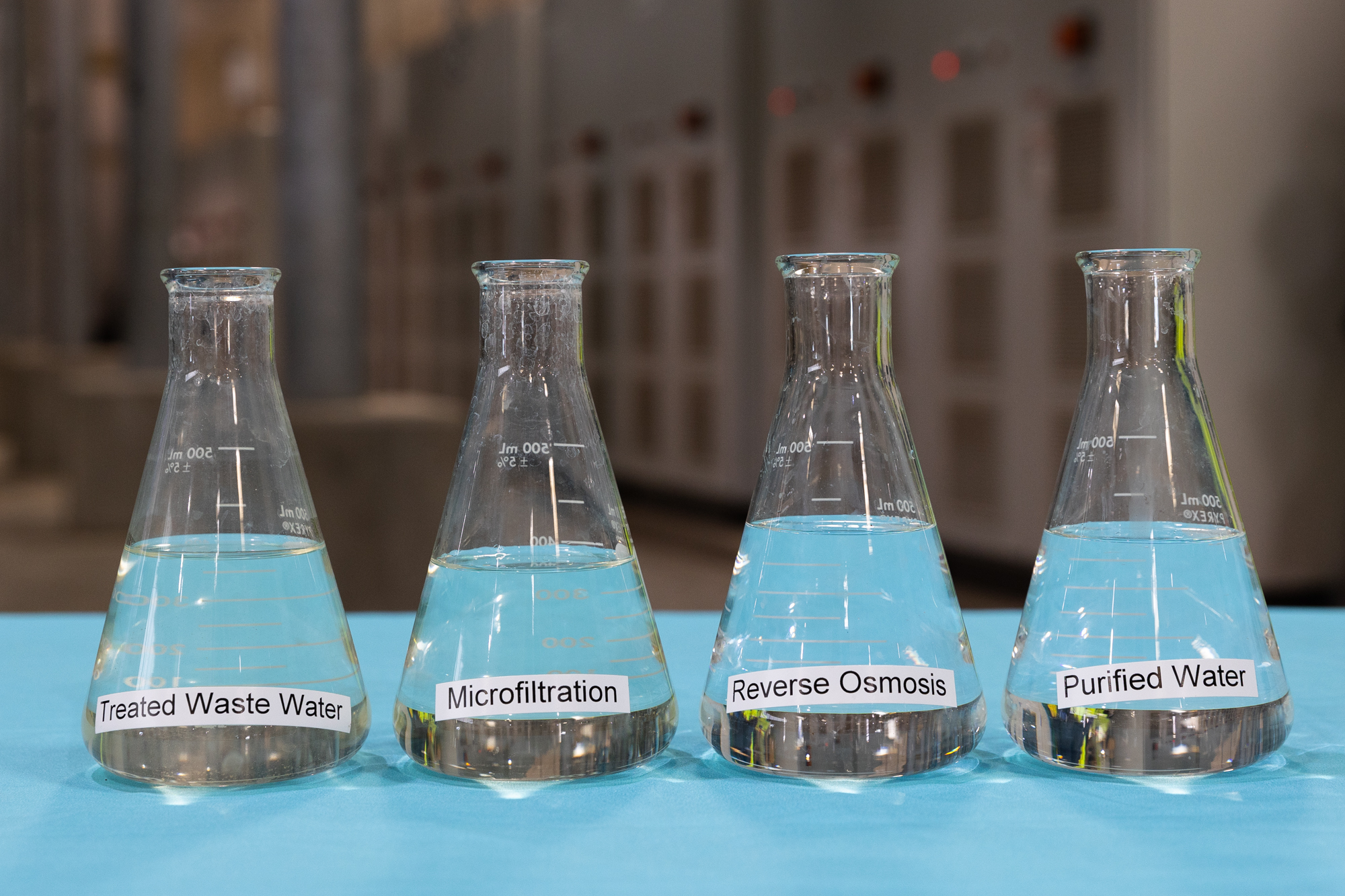The sprawling and largely undeveloped site at the eastern end of San Antonio Road in Palo Alto has seen little action in the 50 years since the Los Altos Wastewater Treatment Plant ceased its operations there.
While the city's trash hauler, GreenWaste, currently uses a southern portion of the Palo Alto site to sort its construction waste, the area is best known these days for its potential. Last month, the city received a $26.6 million grant from the state's Project Homekey program to build a transitional housing program for homeless individuals.
On Monday, the City Council will consider a municipal project with an even higher price tag and complexity: an industrial plant that would remove salt from local treated wastewater, making it more palatable for trees and vegetation and expanding its usage to more customers.
The desalination plant is a major component of the agreement that Palo Alto signed with Valley Water in 2019, which also envisions a larger water purification plant that would turn effluent water into potable water. At that time, Valley Water estimated that the salt-removal plant would cost $20 million and offered to contribute $16 million toward its cost. The balance would be split between Mountain View, which would contribute 75%, and Palo Alto, which would provide the remaining 25%.
Both the water agency and its partner cities have long touted the benefits of the salt-removal plant, which would allow Palo Alto to expand a recycled-water system that today is largely limited to Shoreline Park and Baylands Golf Links. Now, however, they are also confronting a fresh barrier: costs that have more than doubled since the project was proposed.
According to an estimate from the firm Black & Leach, which the city commissioned last year to evaluate the cost of the salt-removal plant, the projected construction cost has gone up from $19.5 million in 2017 to $40.5 million today. When other costs, including engineering services and construction management and program management, are factored in, the total cost is estimated at $52.6 million, up from $22.4 million in 2017.
The latest cost projections, which the council plans to discuss on Monday, reflect the "volatility and increases in construction prices since 2017 and the progression of the design from conceptual level to a fuller design that includes elements not initially considered," a new report from the Public Works Department states. This includes changing the design of the facility's foundations and raising electrical equipment in accordance with the city's policy on sea level rise.
The city is anticipating a $12.9 million grant from the federal government to help pay for the project. If the grant comes in, Palo Alto would be on the hook for about $6.2 million, while Mountain View would cover about $18.5 million under the 2019 agreement with Valley Water. With fresh estimates scheduled to come in at the end of this month, both cities plan to evaluate the new figures before moving ahead with construction, according to staff.
A plant to purify water
In addition to planning for the salt-removing facility, Palo Alto is working with Valley Water on a new purification plant that would also occupy the San Antonio site. This project, however, would be financed by Valley Water and operated through public-private partnerships, according to the agency.
The city and the water agency are working on a lease agreement for the site, which would be brought to the council for consideration at a future date.
If approved, the project would involve constructing a purification plant, a pump station and conveyance pipelines that would move local treated wastewater from the Regional Water Quality Control Plant near the Baylands to the San Antonio site, as well as from the site to the Los Gatos Recharge System complex in Campbell.
Valley Water has been planning a new purification plant for years. Last December, the agency's board voted to approve a staff proposal to move ahead with a project on the Palo Alto site. That followed months of discussions with both Palo Alto and San Jose, where Valley Water is hoping to expand the existing Silicon Valley Advanced Water Purification Center.
Kirsten Struve, assistant officer for the water supply division at Valley Water, made the case to the board for moving ahead with choosing the Palo Alto site as the agency issues a "request for proposals" for work on the purification plant. She noted that negotiations with San Jose would likely take some time and cited the urgency of the project, "particularly in the face of the current drought and expected future route."
The board unanimously voted to select Palo Alto, with Chair Tony Estremera lauding the partnership for a new purification plant as a "once in a lifetime, generational achievement."
"These are basically the things that we leave behind," Estremera said at the meeting.
The new purification plant would rely on a process known as reverse osmosis to convert treated wastewater into potable water. Under this process, every 100 gallons of treated wastewater would produce about 85 gallons of purified water. The remaining 15 gallons would consist of "reverse osmosis concentrate" — the brine that gets left behind through the purification process.
Under the current proposal, the reverse osmosis concentrate would be blended with wastewater effluent and discharged into the Bay — the same process that has been used at the San Jose-Santa Clara Regional Wastewater Facility since 2014.
According to Palo Alto staff, the San Francisco Bay Regional Water Quality Control Board would need to approve the discharge permit and may require pretreatment of the reverse osmosis concentrate before it is discharged into the Bay. The staff report notes that Palo Alto will ensure that Valley Water is responsible for the discharge of reverse osmosis concentrate and any associated risks.





Comments